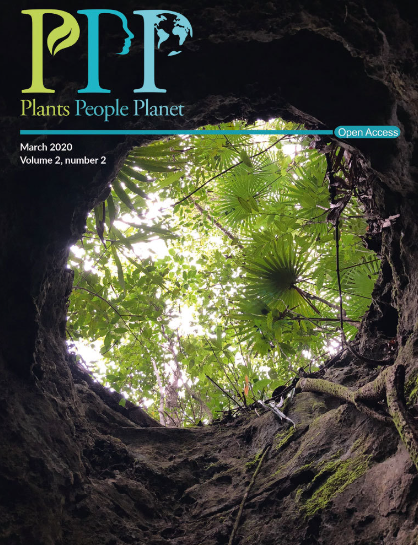用微生物共生支持城市绿地
IF 3.6
2区 环境科学与生态学
Q1 BIODIVERSITY CONSERVATION
引用次数: 0
摘要
城市是植物生长的压力环境,受到高温、污染和生物多样性丧失的困扰。因此,植物群落往往在绿色屋顶、公园和生活墙中受到影响。找到帮助植物在压力环境中生长的解决方案是可持续城市的目标。一个解决方案是在绿色建筑中更好地融入植物与微生物的共生关系。共生真菌和细菌可以提供营养、水分,并帮助植物应对城市压力。从以微生物为重点的角度重新定义绿色基础设施有可能改善城市中的植物健康、生长和多样性。城市中的植物群落有助于维护城市生态系统和居民的健康和稳定。确保绿地健康高效是绿色基础设施和景观建筑(GILA)的一个关键目标。然而,城市对植物来说是一个充满压力的环境。在自然生态系统中,植物与真菌、细菌和其他有助于缓解压力的微生物共生。微生物群落也可能有助于缓解与城市环境相关的压力。将互惠共生纳入GILA是增强城市绿地的可持续方式。在这里,我们解决了城市GILA的主要压力源,包括对化肥的依赖、病原体、干旱、传粉昆虫减少、污染和植物生物多样性减少。对于每一种压力源,我们讨论共生真菌和细菌如何帮助缓解这些问题,包括病例使用场景。最后,我们提出了新的方法,有意将互惠融入城市,并与利益相关者展开对话。本文章由计算机程序翻译,如有差异,请以英文原文为准。
Supporting urban greenspace with microbial symbiosis
Cities are stressful environments for plants, plagued by heat, pollution, and biodiversity loss. As a result, plant communities tend to suffer in green roofs, parks, and living walls. Finding solutions to help plants grow in stressful environments is a goal of the sustainable city. One solution is to better incorporate plant–microbe symbiosis in green architecture. Symbiotic fungi and bacteria can provide nutrients, water, and help plants to cope with urban stress. The reconceptualization of green infrastructure from a microbial‐focused perspective has the potential to improve plant health, growth, and diversity in cities.Plant communities in cities help maintain the health and stability of urban ecosystems and inhabitants. Ensuring that greenspace is healthy and productive is a key goal of green infrastructure and landscape architecture (GILA). However, cities are stressful environments for plants. In natural ecosystems, plants live in symbiosis with fungi, bacteria, and other microbes that can help alleviate stress. Microbial communities may also help with stress associated with urban environments. Incorporating mutualistic symbioses into GILA is a sustainable way to enhance urban greenspace. Here, we address key stressors for GILA in cities, including dependency on fertilizers, pathogens, drought, fewer pollinators, pollution, and reduced plant biodiversity. For each of these stressors, we discuss how symbiotic fungi and bacteria can help mitigate these issues, including case‐use scenarios. We conclude with new approaches to deliberately incorporate mutualisms in cities and open dialogues with stakeholders.
求助全文
通过发布文献求助,成功后即可免费获取论文全文。
去求助
来源期刊

Plants People Planet
Multiple-
CiteScore
9.90
自引率
5.90%
发文量
81
审稿时长
12 weeks
期刊介绍:
Plants, People, Planet aims to publish outstanding research across the plant sciences, placing it firmly within the context of its wider relevance to people, society and the planet. We encourage scientists to consider carefully the potential impact of their research on people’s daily lives, on society, and on the world in which we live. We welcome submissions from all areas of plant sciences, from ecosystem studies to molecular genetics, and particularly encourage interdisciplinary studies, for instance within the social and medical sciences and chemistry and engineering.
 求助内容:
求助内容: 应助结果提醒方式:
应助结果提醒方式:


